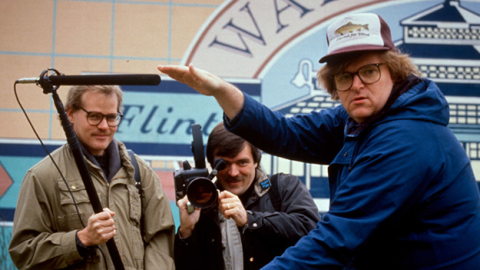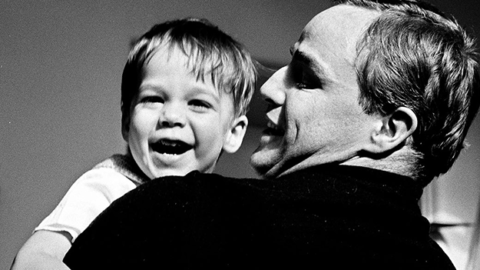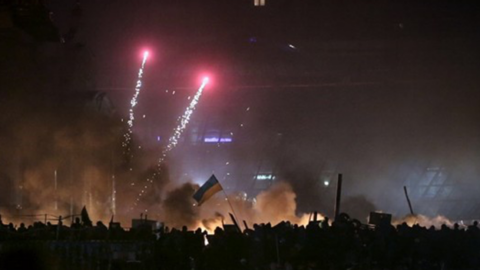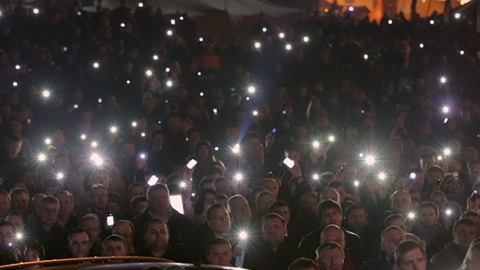Make It Real: The Artist Is Present in the Edit
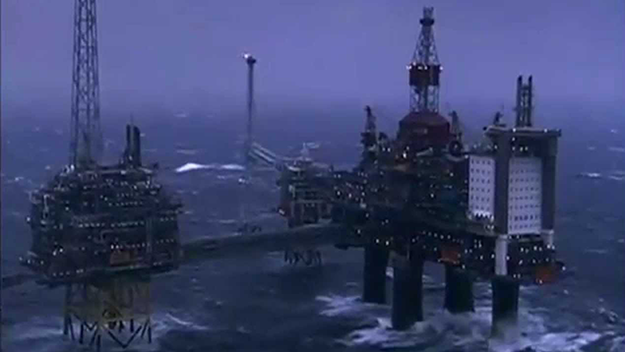
Of the North
There’s not a frame of footage in Of the North that director Dominic Gagnon actually directed—at least as the word is commonly understood. The same goes for Sergei Loznitsa and his new film The Event. Of the North is comprised solely of video clips shot by dozens of Inuits and uploaded to the Internet, while Loznitsa’s raw material is archival footage gathered by a Leningrad-based TV crew during the last days of the Soviet Union in 1991. All of it was recorded for other purposes, without any foreknowledge of these two directors and their intentions. Yet these are most assuredly Gagnon’s and Loznitsa’s films. The footage may not be of their creation, but the tone, sensibility, and meaning constructed from it, very much are.
I caught Of the North recently at the Camden Film Festival, the midcoast Maine documentary survey that quietly gets bolder and more formally ecumenical with each passing year. (Because I served as a juror for the festival’s Emerging Cinematic Vision Award, I will refrain from commenting on any of the eight films in that competition—other than to, no-duh, enthusiastically recommend our winner, the superb I Am the People—or stray further into overarching evaluation.) For the 74 free-associative minutes of Gagnon’s film, one seemingly unrelated video clip follows another. An ace of the non sequitur cut, the filmmaker left-turns from nerve-wracking encounters with polar bears to bored teens doing in-camera magic tricks, from the gutting and skinning of a giant beached whale to a drunk dude puking to a helicopter shot of an oil rig, from a creepily enshadowed close-up of a woman’s genitalia to the homemade trimming of a dog’s tail to a cat ventriloquist with dubious methods. Throughout, you don’t have any idea where any of this is going, or what it might amount to, but the editing style hardly speaks of amateurism, or of remote-control randomizing. There’s an anarchic absurdism at play that’s thrilling, and even a bit terrifying. How does this shot relate to the next? What am I listening to as I watch a plane with frozen wings take off from what seems like a glacier? All shots seem to have equal value, and progress not narratively but willfully, motivated by a very strong but opaque editorial hand and sensibility.
Without any explanatory intertitles or voiceover, it only becomes apparent over time that all of this footage was uploaded, and ostensibly shot, by people living in the northern quadrant of the world, and that the evocation of Robert Flaherty’s Nanook landmark in the title isn’t accidental. These aren’t just random clips of mostly dumb behavior—though the film can gleefully function along these lines—they’re self-authored clips by people who’ve rarely had any agency in the popular, historical, or cinematic imagination. Not that these or any other people would want their identity defined by drunken snowmobiling or raw sewage being fed to unsuspecting caribou, but there’s something weirdly exhilarating and unsentimentally humanizing about this angle of observation. There’s a freeing, leveling inclusivity quality to these clips, fostered by the public square aspect of YouTube (the limits of which the director has explored in previous montages comprised of clips removed from the site (RIP in Pieces America, Pieces and Love All to Hell).
As the end credits attest, Gagnon claims no ownership over the clips—he even scrolls through them all by title, should anyone one want to find and play Akat killing the golf ball!! or Trumpeter of Salluit Quebec playing How Great Thou Art in full. Yet his film is not a merely medium for others’ art, he’s not a messenger. He’s created the context. He has arranged the clips in this particular order, has chosen when and how to cut from one clip to another. He has designed sound bridges that introduce cacophonous “what is that sound” music minutes before we glimpse where it comes from. He exults in disorienting and oddly hilarious juxtapositions between sound and image. He collected clips from the free market of YouTube and made something uniquely his own with them. That’s ostensibly also the strategy of Kutiman, the subject of Thru You Princess, a film I discussed in last week’s column: he takes instrumentation found on YouTube clips and constructs new, sonically ambitious songs from them. But without necessarily making a qualitative distinction, there’s a difference between the two. Kutiman’s aim is to bring these disparate sounds, of disparate origin and quality, into the new context of a well-produced song. Meanwhile Gagnon’s project both functions as a freestanding work of art and projects away from itself and into these strange and banal environments. It’s joyously and aggressively crafted, thoroughly directed through the edit, but also transporting and complicatedly disowned. It’s found-footage montage as gonzo ethnography.
Loznitsa achieves something like the opposite with The Event, which premiered in the Venice Film Festival and screened at Toronto as part of the Wavelengths program—reliably the best, smartest, and formally most progressive wing of the festival; on its own terms, and even accounting for its dramatic titles, the program should be considered one of the most important nonfiction surveys in the world. Via stunning black-and-white archival footage, The Event transports the audience back to when St. Petersburg was still known as Leningrad, and specifically to the days in August 1991 when a failed coup by Communist hardliners led to the dissolution of the Soviet Union, which the film chronicles from the streets of the city. It’s misleading to call the footage “found,” since it was hardly accidentally, privately, or amateurishly shot—rather it’s the work of an experienced TV crew assigned to cover this unprecedented event as it unfolded. It would also be misleading to imply that Loznitsa has aggressively repurposed this footage for his own ends—events seems to be chronologically arranged, and scenes—of street protests, of thickening crowds, of speeches and debates—are constructed cleanly and clearly. Sound design is a slightly different matter, as Loznitsa manufactures a fair amount of appropriate effects, modulates volume to isolate certain bits of dialogue, and stitches together numerous sources to create a plausible soundscape.
The director’s hand operates differently here than it does in Of the North. While Gagnon’s choices are so evident and forceful, Loznitsa’s are far less so; and instead of whipping us from one place/mode/aesthetic to another, he’s rooting us in a very specific time and place. Such fidelity to the archival footage becomes all the more impressive when you realize that, even though he’s fluidly transported us to that historical moment, Loznitsa hasn’t really made a film about August 1991. He’s made a film about right now.
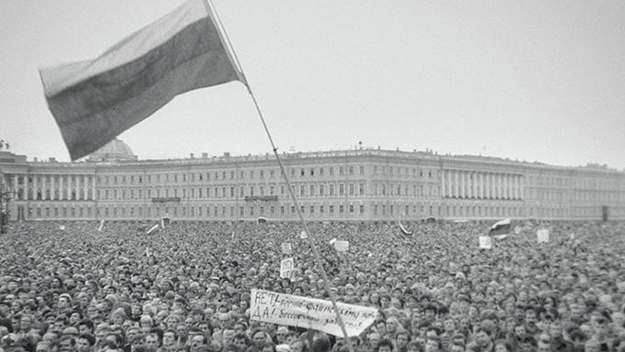
The Event
Following up his astounding, game-changing observational film about the Ukrainian revolution, Maidan, Loznitsa returns to the spontaneous public square and to gathering crowds of agitated citizens. Yet there were no violent clashes with authorities in Leningrad, but rather widespread and momentous calls for political change, even among officials like Mayor Anatoly Sobchak. In the shadow of The Hermitage, the site of heroic resistance during the Great War and ground zero of the country’s cultural and artistic legacy, words are sounded “against complacency, against corruption, for change and democracy.” Rather than frustration, cynicism, or tragedy, these are scenes of supreme optimism, of change in action, of collective empowerment. Accurate information is hard to come by in the square. Who’s claiming to be in charge? Is Gorbachev impaired or even killed? Is there even a government, constitution, or country anymore? But there’s undeniable momentum for ending Communist rule, a transformation caught on camera over a mere handful of days, until the old tricolor flag is hoisted over the city, forever replacing the hammer and sickle.
Loznitsa constructs The Event as a revival—of a transformative moment not that far in the past that nevertheless seems unreachably distant, and of a spirit of resistance and collective action that’s been inadequately fomented in the current Russian climate. The film is inspiring for and condemning of today’s moment, but also mindful of how that previous moment helped to create the current one. Anti-corruption crusader Sobchak would go on to preside over a deeply corrupt St. Petersburg, flanked by rising star Vladimir Putin. He’d go on to flee to Paris to escape prosecution, returning only under the protection of his former protégé, with whom he would meet shortly before dying suddenly of a heart attack (aka poison) during the lead-up to the 2000 election. Things went badly very, very quickly in Russia after those August days of optimism. Loznitsa’s movie showcases one of the country’s few true triumphs of collective political protest, but not without nodding to how that triumph would lead to disillusionment. Are progress and change destined to fail in Russia?
In a short, chaotic coda, the film crew shows up to witness the seizing of the government offices and papers, but not before much evidence has been ransacked, stolen, or destroyed. The authors of the nation’s demise would mostly get away with it, and many of them would continue or return to rule and profiteer. Twenty-four years later, one of them is still in power, the one glanced early in the film, young and handsome and moving swiftly and confidently from one place to another. Yet Loznitsa never underscores any of this, he doesn’t construct a narrative to function as a direct line between then and now. Rather he revives those days with incredible detail, creating a cinematic space in which we can revisit the physical one recorded by that TV crew. And while there, the echoes are unmistakable. The agitated past condemns the impassive present, and the corrupted present condemns the naïve past. Walking away from The Event, I was convinced that every second of footage Loznitsa chose was meant as a metaphor for now, even though none of the footage is presented metaphorically. That’s some cinematic sorcery right there, and politically dissident to the core: construct a film that’s exactly what it is, and yet have it mean something other, something unmentioned, something understood—like a somber, knowing nod from across the room.



